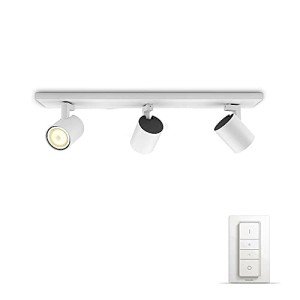15 Gifts For The Traditional Lighting UK Lover In Your Life

Traditional Lighting in the UK: A Comprehensive Overview
Traditional lighting holds a valued place in the homes and public spaces of the United Kingdom. With its capability to stimulate nostalgia, appeal, and heat, traditional lighting fixtures provide not just aesthetic appeal however likewise useful value. This post explores the various types of traditional lighting common in the UK, their history and advancement, popular designs, and how to incorporate them into modern decoration.
A Historical Perspective on Traditional Lighting
The development of lighting in the UK has actually been substantial. From the flickering flames of candles and oil lamps to the advent of gas and electric lights, the journey is as interesting as it is enlightening.
Key Milestones in Lighting History:
- Candles (Before 1800s): The earliest form of artificial light, using tallow or beeswax.
- Oil Lamps (Late 18th Century): These became popular in homes and theaters, supplying brighter lighting than candles.
- Gas Lighting (Early 19th Century): Revolutionized public and street lighting before electricity took precedence.
- Electric Lighting (Late 19th Century): Marked the transition to modernity, with incandescent bulbs gradually changing older types.
Each of these developments led the way for traditional lighting, which still includes ancient techniques into contemporary styles.
Kinds Of Traditional Lighting
Traditional lighting can be classified into a number of distinctive types, each with its unique characteristics.
1. Chandeliers
Chandeliers are often the centerpiece of a room. They come in various designs, from ornate Victorian designs to easy, rustic designs.
Popular Features:
- Crystal decorations
- Iron structure
- Different bulb types
2. Wall Sconces
Wall sconces offer both creative flair and soft illumination. They can be used in hallways, living rooms, or bathrooms, boosting the environment of a space.
Common Styles:
- Candle-style sconces
- Brass or iron fixtures
- Vintage-inspired designs
3. Table Lamps
Table lamps embody the flexibility of traditional lighting as they can fit into any room. Varying from easy styles to elaborate pieces, they are ideal for checking out nooks, side tables, or desks.
4. Floor Lamps
Comparable to table lamps in design and function, floor lamps can create cozy corners in a home. Vintage designs frequently consist of tripod bases or detailed patterns.
5. Lanterns
Though frequently related to outdoor settings, traditional lanterns can likewise be utilized indoors for a rustic touch. They are available in various materials consisting of wood and metal.
Integrating Traditional Lighting into Modern Decor
In a world progressively leaning towards minimalism and modern styles, traditional lighting still holds its ground. The secret is to preserve a balance. Here are some ideas for incorporating traditional lighting into a contemporary home:
1. Mix Styles
Integrate traditional lighting with modern furniture to produce an eclectic room. For example, a vintage chandelier can be hung above a sleek dining table.
2. Usage Dimmer Switches
To manage the ambiance, set up dimmer switches that permit soft lighting, which matches both traditional and modern interiors.
3. Choose Mixed Materials
Select lighting fixtures that combine different materials, such as a wood lamp with a metal or glass base, to bridge the space in between old and new.
4. Highlight Architectural Features
Usage traditional fixtures to highlight unique architectural functions in your home. For example, hanging a vintage lantern in a hallway with exposed brick enhances its rustic appeal.
5. Include Natural Elements
Choose styles that integrate natural products such as wood or wrought iron. click the following page tend to mix well with modern decor while keeping a traditional flair.
Table: Comparison of Traditional Lighting Types
| Lighting Type | Description | Typical Materials | Normal Settings |
|---|---|---|---|
| Chandeliers | Decorative ceiling fixtures, frequently elaborate | Crystal, metal | Dining rooms, ballrooms |
| Wall Sconces | Installed fixtures that provide ambient light | Brass, iron | Hallways, living spaces |
| Table Lamps | Portable lamps for tables and desks | Glass, ceramic | Bed rooms, offices |
| Floor Lamps | Standalone lamps for corner lighting | Wood, metal | Living spaces, dens |
| Lanterns | Rustic or vintage light sources | Wood, metal | Patios, gardens |
Frequently Asked Questions
1. What is traditional lighting?
Answer: Traditional lighting refers to light that embody historical or classic designs, frequently identified by the use of elaborate materials, elaborate patterns, and a warm visual.
2. How can I preserve traditional lighting fixtures?
Response: Regular cleaning and occasional deep cleansing are essential. For fixtures with glass or crystals, utilize a mild glass cleaner. For metal elements, guarantee you use appropriate cleaning solutions that will not damage the surface.
3. Are traditional lighting fixtures energy-efficient?
Response: Many traditional fixtures can accommodate modern LED bulbs, which offer better energy effectiveness. Always examine compatibility when changing to LED options.
4. Can I mix traditional lighting with modern style?
Response: Yes, mixing traditional lighting with modern decoration can develop a distinctively inviting area. Balance is critical; select complementary styles to maintain visual consistency.
5. What is the finest way to pick traditional lighting for my home?
Response: Consider your home's overall style, the function of the space, and personal taste. Take measurements to ensure suitable sizing and choose products and colors that harmonize with existing decoration.
Traditional lighting serves as an enduring link to history, workmanship, and visual appeals, showing that timeless styles have their rightful place, even amidst progressing patterns. Comprehending the different types of traditional lighting and their application can help house owners produce inviting spaces that reflect both sophistication and heat, perfectly blending the past with the present.

